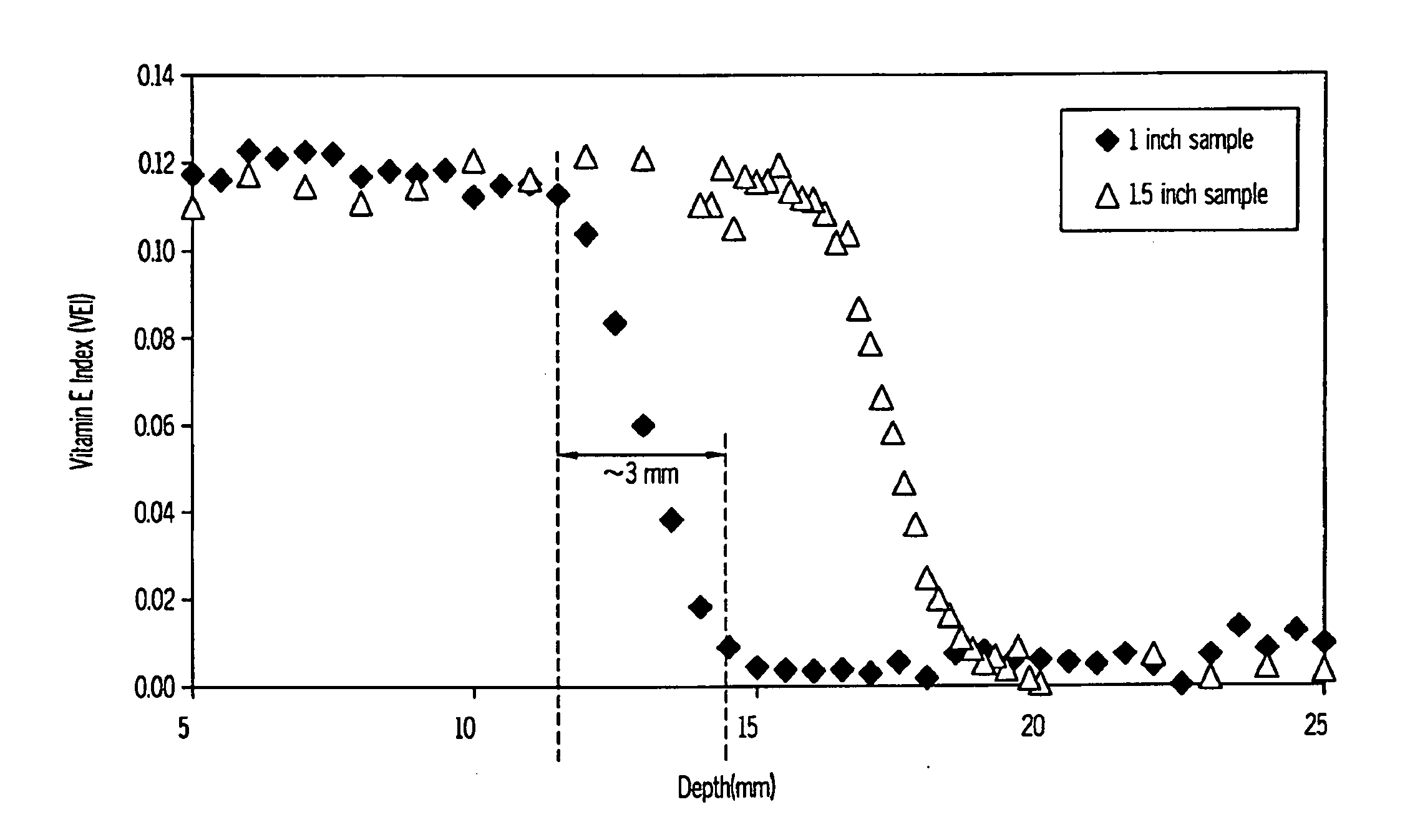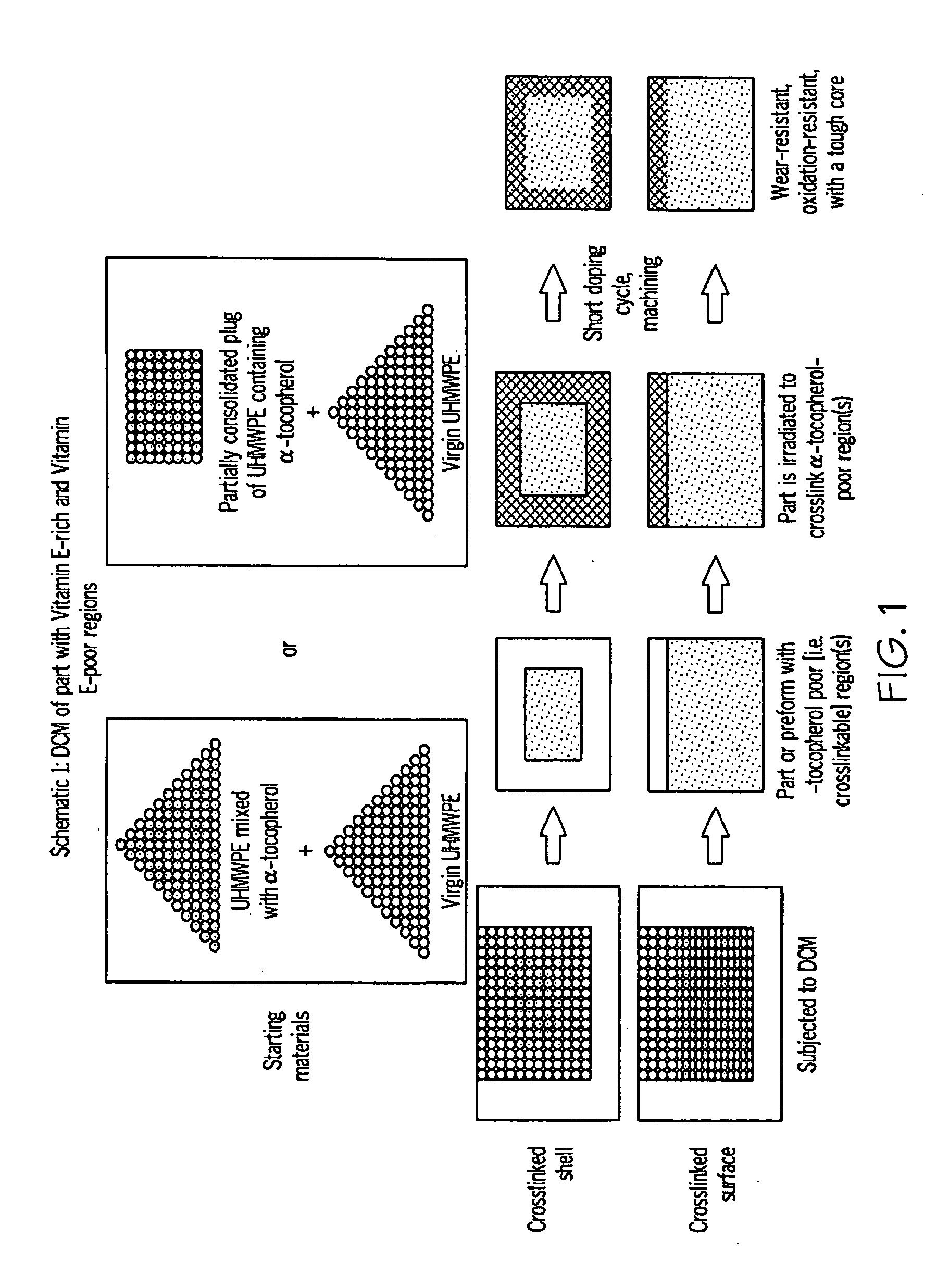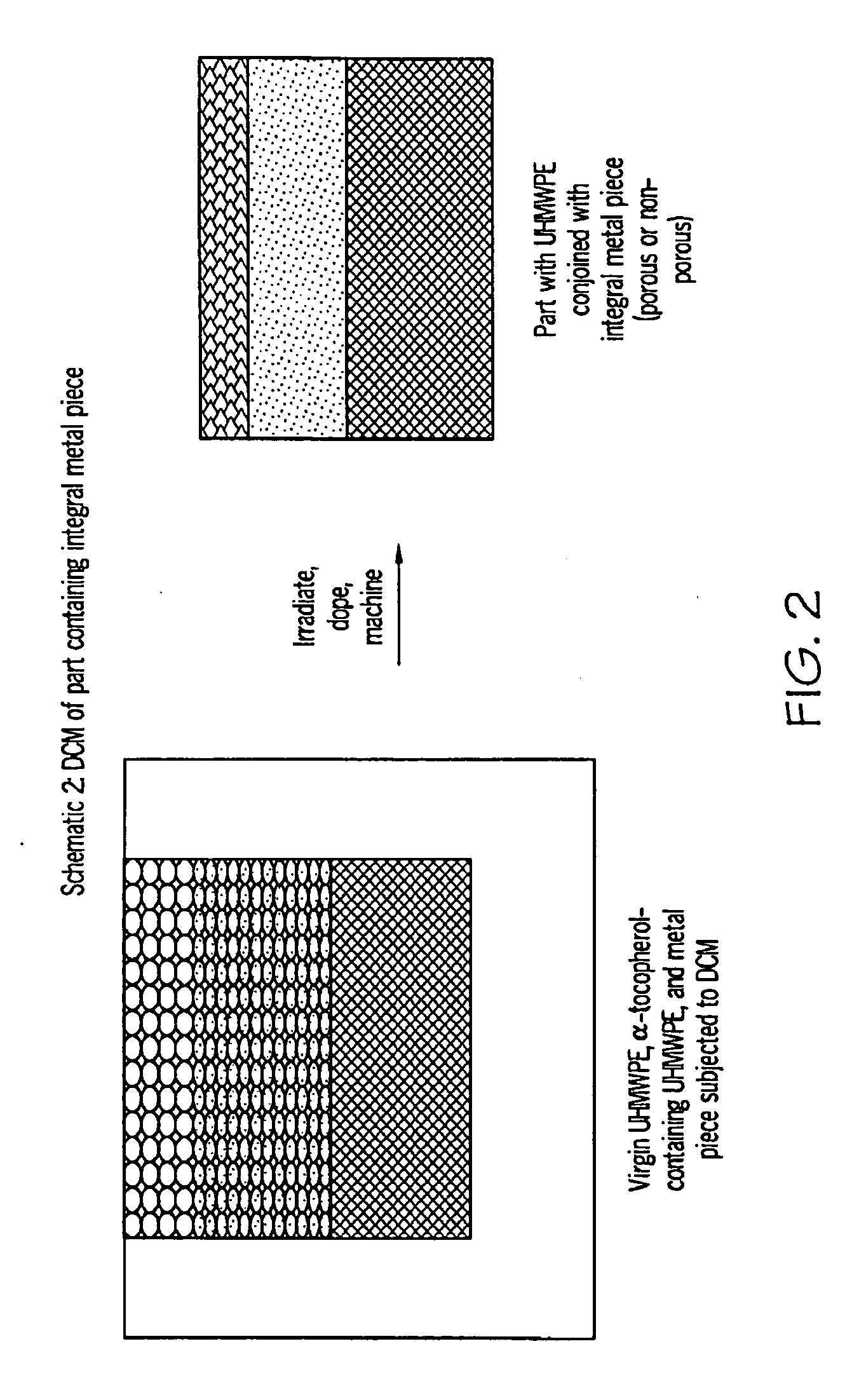Methods for making oxidation-resistant cross-linked polymeric materials
a cross-linked polymer and oxidation-resistant technology, applied in the field of making oxidation-resistant cross-linked polymeric materials, can solve the problems of reducing the crystallinity of polyethylene, oxidation and embrittlement, and compromising the longevity and performance of total joints in the long-term, so as to and prevent or minimize in vivo elution of antioxidants
- Summary
- Abstract
- Description
- Claims
- Application Information
AI Technical Summary
Benefits of technology
Problems solved by technology
Method used
Image
Examples
example 1
DCM of UHMWPE Pucks Containing α-Tocopherol-Rich Regions and α-Tocopherol-Poor Regions
[0323]Two puck-shaped pieces of UHMWPE, both 2.5″ in diameter, were direct compression molded (DCM). One puck was 1″ thick, the other one was 1.5″ thick. The 1″ thick puck was produced using a standard molding cycle in which the bottom half of the mold was filled with GUR 1050 powder containing 0.5 wt % α-tocopherol and the top half with virgin GUR 1050 powder. The 1.5″ thick puck was produced using a modified molding cycle, in which the bottom half of the mold was filled with GUR 1050 powder containing 0.5 wt % α-tocopherol and compressed at room temperature under a pressure of 1220 psi. Following release of the pressure, the top half of the mold was filled with virgin GUR 1050 powder followed by a standard DCM cycle. A picture of the 1.5″ thick puck is shown in FIG. 3A.
[0324]A thin film was microtomed across the sample from both of the pucks for FTIR analysis of the Vitamin E Index (VEI) as a fun...
example 2
DCM of Acetabular Component with Wear-Resistant Bearing Surface and Tough Interior
[0338]An acetabular shell of a porous metal such as tantalum, titanium, or other, or a non-porous metal, is used. GUR 1050 UHMWPE powder blended with α-tocopherol is fully consolidated or partially consolidated into the metal shell. UHMWPE diffusion into the metal is self-limiting. Other UHMWPE resins such as GUR 1020 are also used. The concentration of α-tocopherol in the powder blend is between about 0.005 and about 20 wt %, preferably between 0.05 and 5.0 wt %, preferably about 0.3 wt %, preferably about 0.5 wt %, or preferably about 1 wt %. The plunger used to pack the blended powder into the metal component is large enough to allow additional powder to be added in a second consolidation process, during which virgin GUR 1050 powder or GUR1050 with low amount of vitamin E is added over the blended GUR 1050 layer already in the shell. The second consolidation process is then performed using a plunger...
example 3
DCM of Tibial Component with Wear-Resistant Bearing Surface and Tough Interior
[0342]A tibial base plate made from a porous metal such as tantalum, titanium, or other, or a non-porous metal, is used. GUR 1050 UHMWPE powder blended with α-tocopherol is fully consolidated or partially consolidated onto the base plate. UHMWPE diffusion into the porous metal is self-limiting. Other UHMWPE resins such as GUR 1020 are also used. The concentration of α-tocopherol in the powder blend is between about 0.005 and about 20 wt %, preferably between 0.05 and 5.0 wt %, preferably about 0.3 wt %, preferably about 0.5 wt %, or preferably about 1 wt %. Virgin GUR 1050 powder or GUR1050 powder blended with low amount of vitamin E is then added over the blended GUR 1050 layer already present. A second consolidation process is then performed using to produce a total UHMWPE layer that is larger the final UHMWPE thickness in the finished component. The time of consolidation and the thickness of the virgin ...
PUM
| Property | Measurement | Unit |
|---|---|---|
| Temperature | aaaaa | aaaaa |
| Temperature | aaaaa | aaaaa |
| Temperature | aaaaa | aaaaa |
Abstract
Description
Claims
Application Information
 Login to View More
Login to View More - R&D
- Intellectual Property
- Life Sciences
- Materials
- Tech Scout
- Unparalleled Data Quality
- Higher Quality Content
- 60% Fewer Hallucinations
Browse by: Latest US Patents, China's latest patents, Technical Efficacy Thesaurus, Application Domain, Technology Topic, Popular Technical Reports.
© 2025 PatSnap. All rights reserved.Legal|Privacy policy|Modern Slavery Act Transparency Statement|Sitemap|About US| Contact US: help@patsnap.com



